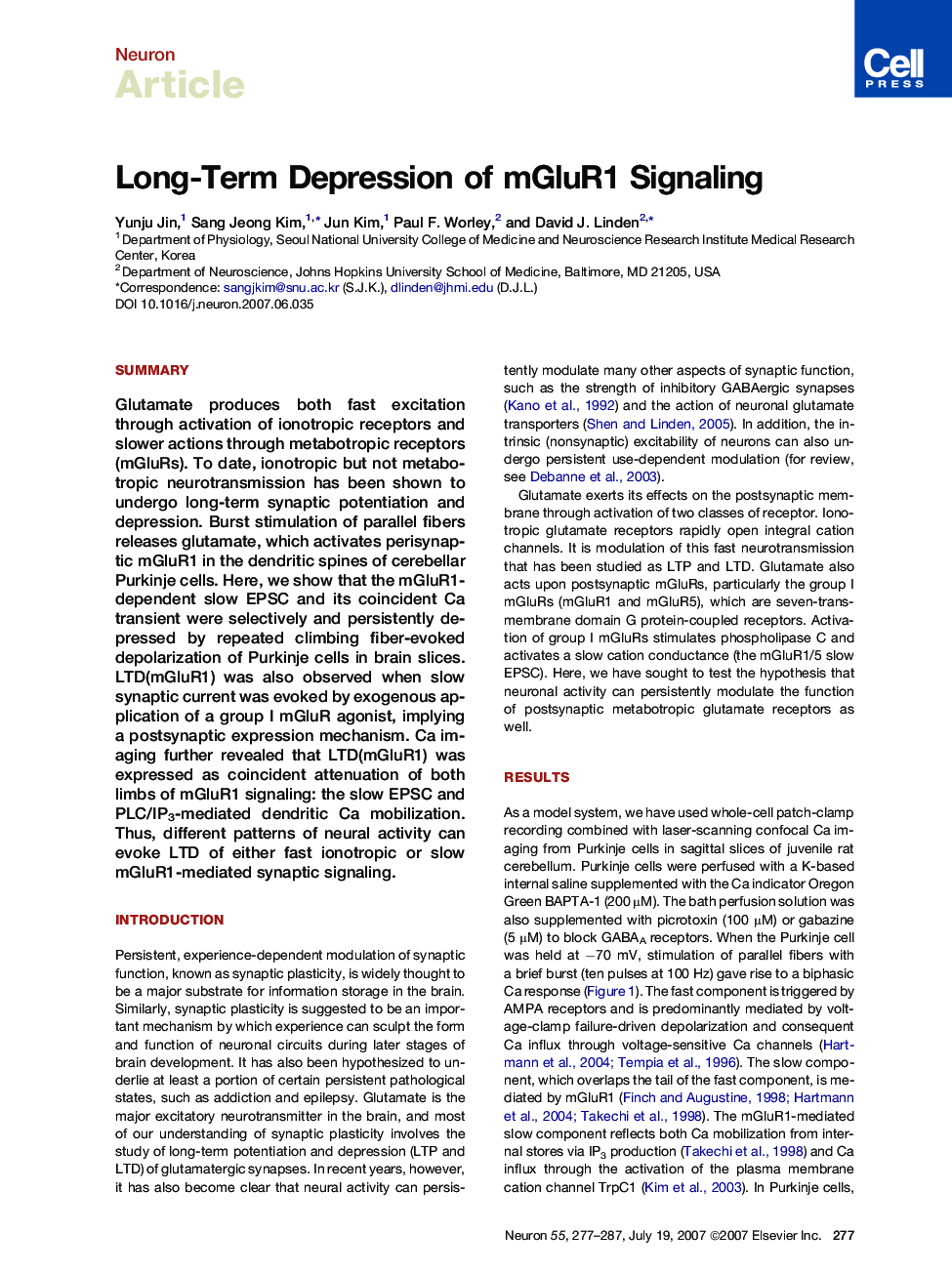| Article ID | Journal | Published Year | Pages | File Type |
|---|---|---|---|---|
| 4322598 | Neuron | 2007 | 11 Pages |
SummaryGlutamate produces both fast excitation through activation of ionotropic receptors and slower actions through metabotropic receptors (mGluRs). To date, ionotropic but not metabotropic neurotransmission has been shown to undergo long-term synaptic potentiation and depression. Burst stimulation of parallel fibers releases glutamate, which activates perisynaptic mGluR1 in the dendritic spines of cerebellar Purkinje cells. Here, we show that the mGluR1-dependent slow EPSC and its coincident Ca transient were selectively and persistently depressed by repeated climbing fiber-evoked depolarization of Purkinje cells in brain slices. LTD(mGluR1) was also observed when slow synaptic current was evoked by exogenous application of a group I mGluR agonist, implying a postsynaptic expression mechanism. Ca imaging further revealed that LTD(mGluR1) was expressed as coincident attenuation of both limbs of mGluR1 signaling: the slow EPSC and PLC/IP3-mediated dendritic Ca mobilization. Thus, different patterns of neural activity can evoke LTD of either fast ionotropic or slow mGluR1-mediated synaptic signaling.
